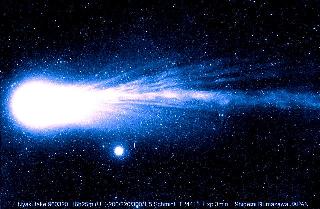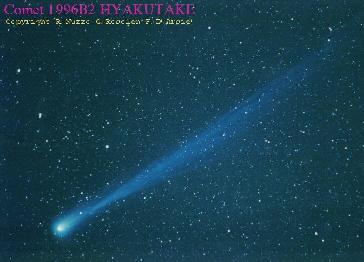
| Comet Hyakutake The Great Comet of 1996 |
|---|

| Comet Hyakutake The Great Comet of 1996 |
|---|


Radar observations of the comet by Steve Ostro from JPL on March 24-25, 1996 showed the comet nucleus to be only from 1 to 3 km. Though the comet nucleus was small, its brightness was due to its close passage by the Earth. Another side effect of the close flyby was that viewers from Earth were able to view the comet broadside, and the comet exhibited a tail up to 100 degrees long! This is one of the longest comet tails ever observed in history.
Ron Baalke, STARDUST Webmaster, ron@jpl.nasa.gov
Last Updated Wednesday, 07-Jun-2000 13:50:33 PDT